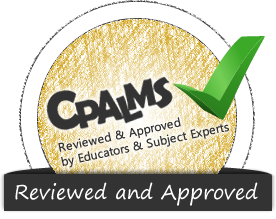Please sign in to access this resource
Not a Florida public school educator?
Access this resourceon CPALMS.com
General Information
Freely Available: Yes
Aligned Standards
This vetted resource aligns to concepts or skills in these benchmarks.5 Lesson Plans
In this lesson, students analyze primary and secondary source documents, as well as engage in a Structured Academic Controversy, in an effort to answer the central historical question: Were Lewis and Clark respectful to the Native Americans they encountered on their journey? Detailed directions are provided for both teacher and students as to how to conduct a Structured Academic Controversy. All primary and secondary source documents (a letter from Thomas Jefferson, 4 excerpts from Clark's journals from 1805 and 1806, and a Time magazine article exploring the expedition from the Native American's point of view) are included with the lesson.
In this lesson, students analyze 3 primary source documents (an editorial by Alexander Hamilton, and back-and-forth letters by Senators Rufus King and Timothy Pickering) in an effort to answer the central historical question: Why did Federalists oppose the Louisiana Purchase? The teacher models sourcing and contextualization to help students analyze the documents while the students fill in a graphic organizer. A final class discussion attempts to uncover the Federalist critics' real motivations—was their opposition practical or political?
In this lesson, students analyze maps, art, and primary source documents in an effort to answer the central historical question: How did Americans justify westward expansion? To begin the lesson, students will examine a painting entitled "American Progress. "Students will compare 2 maps of the U.S.: a political map from 1872 and an electoral map from 1816. Next, students examine another 1816 map; the map is unusual in that it depicts the U.S. stretching to the Pacific—decades before this actually happened! Students will read 2 passages by John O'Sullivan, coiner of the phrase "Manifest Destiny," and answer guiding questions. A final class discussion reviews students' answers and touches on the subject of American Exceptionalism.
In this lesson, students analyze 3 source documents in an effort to answer the central historical question: Was Nat Turner a hero or a madman? The lesson begins by first reading the class textbook's account of the Nat Turner massacre and then reading a timeline which includes Turner's capture and execution. The teacher them models the first document, an excerpt from Thomas Gray's Confessions of Nat Turner, by helping students answer sourcing, contextualization, corroboration, and close reading questions. Students then do the same with 2 more documents: a newspaper editorial contemptuous of Turner and an admiring 1843 speech by Henry Garnet to the National Negro Convention. Finally, students use all 3 documents to write a response to the central question and discuss as a class: what kind of person was Nat Turner?
In this lesson, students analyze primary source documents in an effort to answer the central historical question: Why did Texans declare independence from Mexico in 1836? The teacher introduces the topic with a film clip (Note: requires registration to Discovery Education's website) and timeline and elicits student hypotheses. Students are then given 4 documents: 1) the Texas Declaration of Independence, 2) a letter by Tejano Rafael Manchola, 3) a speech by Mexican Juan Seguin, and 4) a pamphlet by abolitionist Benjamin Lundy. Students then analyze each using a graphic organizer; a final class discussion invites students to participate in the historical debate.
![Cpalms [Logo]](/images/cpalms_color.png)






 Open Resource Page
Open Resource Page


